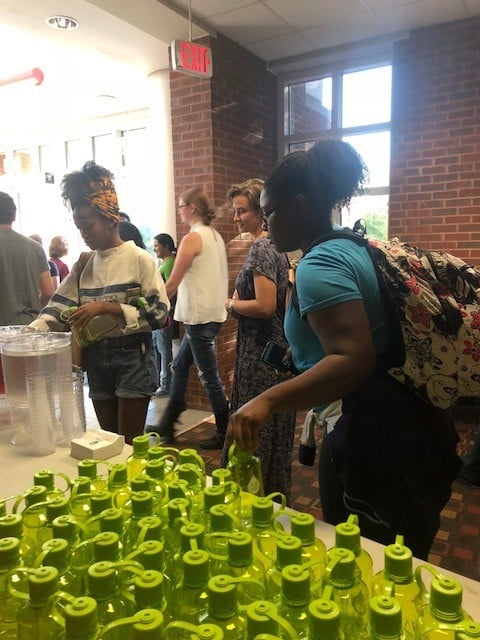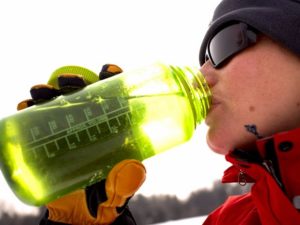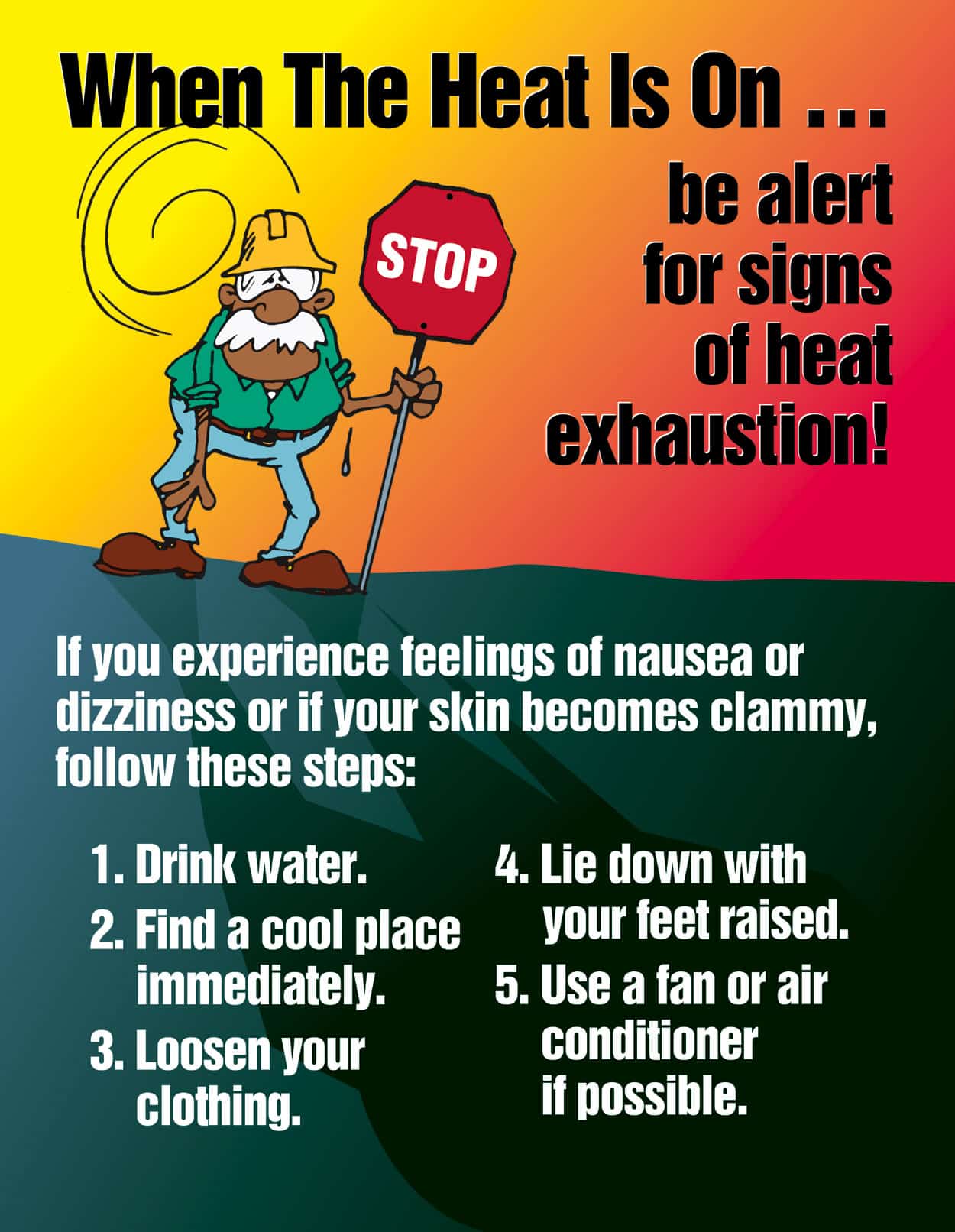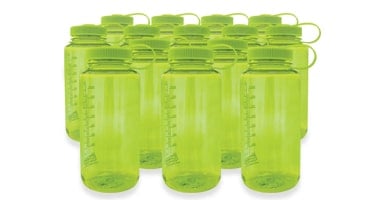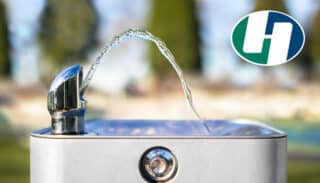Every year the Georgia College Office of Sustainability host a symposium for the campus and community. This year they had a professor name John Sabraw from Ohio State University present. His mission is to remediate streams affected by acid mine drainage by utilizing the iron oxide byproduct to create acrylic and oil paint. During the transformative process, he collaborates with engineers, 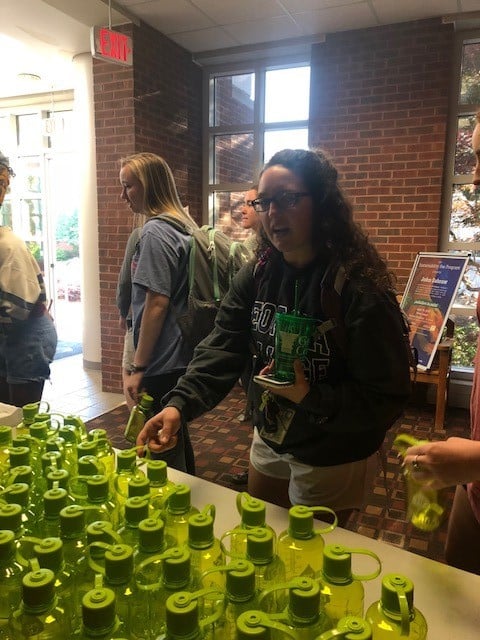 environmentalists, biologists, and chemists to create a product that is suitable for other artists to use and provides an opportunity for them to incorporate sustainable practices into their studios.
environmentalists, biologists, and chemists to create a product that is suitable for other artists to use and provides an opportunity for them to incorporate sustainable practices into their studios.
Over 200 people attended the event on Thursday April 19th. Sabraw talked about his path to where he is now, how art and science are linked, and why people should pay attention to their surroundings.
“The water bottles donated by Haws for the second year in a row were again a big hit within the community. Some people’s reason for coming to the event was to get their free reusable water bottles! It was nice to give away such a useful gift at the symposium. Hopefully after getting an bottle and hearing Sabraw’s challenging journey; people will think about the impact they have on the environment. The bottles really made our event look more professional, serious, and important.”
– Toria Middleton, Student at GCSU.
Staying Hydrated In the Warm WeatherSTAYING HYDRATED IN THE WARM WEATHER
With the warm weather approaching, it is imperative to stay hydrated. The dog days of summer have hit with temps 100 degrees and higher! Not only is this unpleasant, it can be dangerous. Our body’s fluid requirement increases as the temperature rises and being dehydrated can have serious effects on your health. Check out my tips on how to keep yourself hydrated and learn which foods/beverages hydrate you.
Functions of fluid in the body
Our body is made up of 55 – 60% water. Water is essential for life and plays vital roles in the body, including regulation of metabolism and body temperature. Every day we lose water about 2 1/2 liters of water through breathing, perspiration, urine and bowel movements. And when you are outside in the heat, you lose even more. For our bodies to function properly, we need to replenish these fluid losses by consuming beverages and foods that contain water.
Who is at risk for dehydration?
Everyone who goes outside in the heat is at risk for dehydration, but those people who work or exercise outdoors, children, the elderly and anyone who has a pre-existing conditions—such as respiratory or cardiovascular related conditions, or diabetes has a greater risk.
Symptoms of dehydration
Symptoms of dehydration range from mild to life threatening. How many times have you had a headache, a dry mouth, felt weak or haven’t urinated in hours? It’s possible that you were dehydrated. Other symptoms include constipation, dry eyes, muscle cramps, decreased sweating, and nausea. While not a symptom, dehydration can increase risk of kidney stones. More serious symptoms include mental confusion, vomiting, racing pulse, difficulty breathing, seizures, etc. At this point, medical attention is needed immediately.
How much fluid do you need a day?
The recommendation used to be that we consume 64 oz of water a day. However newer research led to updated recommendations by the Institute of Medicine:
– adequate intake for men is ~ 3 liters (about 13 cups) of total beverages a day
– adequate intake for women is ~ 2.2 liters (about 9 cups) of total beverages a day.
It has also been shown that we can meet up to 25% of our fluid needs from watery foods, such as tomatoes, lettuce, watermelon and oranges. (check out this chart for more info – remember to divide by 28 to convert grams to ounces!)
*Keep in mind that your fluid needs will be higher if you work or exercise in the heat!
Tips to increase your fluid intake in the hot weather
1. Eat watery fruits and veggies to get nutrition and fluid.
- Don’t wait until you are thirsty. By the time thirst sets in, you are already dehydrated.
- If you know you’ll be doing errands or in the car for extended periods of time, freeze bottles of water and take them with you. Drinking warm water when it is 90 degrees outside is not pleasurable! (nor is drinking hot Gatorade on a 60 mile bike ride!)
- At work, set concrete goals with regards to fluid intake, otherwise you may get caught up in what you are doing and forget to drink. For example, tell yourself that you need to finish at least 3 16 oz bottles of water by the end of the day.
- Drink 8 oz of water before you leave the house in the morning. Drink 8 oz with both lunch and dinner. Now you’ve consumed 24 ounces!
- While water is always best, other beverages such as tea and coffee (both iced and regular), juice, sports drinks and milk count as fluid. In the past it was said that caffeinated beverages dehydrated you. We now know that they can provide your body with fluid – if you are used to drinking them. My disclaimers:
*While I strongly discourage drinking soda, both regular or diet (for many reasons!), it does contain fluid and therefore will hydrate you. But try to get more of your fluid intake from water …
* But keep in mind that sports drinks and juices tend to contain large amounts of sugar – not a good thing for most of us …
* While caffeinated beverages can provide fluid, I don’t recommend consuming large amounts of caffeine (and some people shouldn’t consume any). See my previous post on caffeine …
- If you don’t love plain water, try adding a squeeze of lemon or lime to flavor it. Or drink flavored seltzer.
- If you are exercising for 60 minutes+ (especially if it is in the heat), drink a sports drink that contains electrolytes and carbohydrates. Otherwise, plain water is fine. If you are working in the heat and sweating profusely, you may want to drink a low calorie sports drink such as G2 to get the electrolytes but with less sugar.
- A good way to test your hydration status is to check the color of your urine. Clear or light-colored urine means you’re well hydrated, whereas a dark yellow or amber color usually signals dehydration. Keep in mind that taking B vitamins can cause your urine to appear more yellow!
- It is highly unlikely that the average person will drink too much water. The exception may be with endurance athletes who drink large amounts of water when exercising for long periods of time. This can cause a potentially dangerous condition called hyponatremia (low sodium levels in the blood). This can be prevented by drinking a sports beverage that contains electrolytes (including sodium)
- Lastly – sorry but alcohol doesn’t count as fluid (to all my friends who get out the lemonade and vodka as soon as the temps rise … you know who you are!) Alcohol does the opposite and causes dehydration.
Be safe and drink up!
Written by Steve Rapoport of Fresh2o
Article Re-post: Are Your Children Dehydrated At School?BRITA reveals the statistics of children’s drinking habits at school and that parents don’t know how much their children drink at school.
A new study by BRITA – Europe surveyed 2,000 parents of primary school children. The results show that almost three quarters of parents don’t know how much water their children drink whilst at school. 66% of parents admitted to not knowing the recommended daily intake of fluid for children.
- 92% of parents believe hydration is important for their children and it helps to boost concentration levels during lessons.
- Parents have more control over their children’s drinking habits during the weekends and holidays and 63% of parents say they encourage their child to drink plenty of water when they are at home.
- 77% of parents across the nation said that the main challenge they face with their children is combating their forgetfulness when it comes to drinking the recommended amount of water.
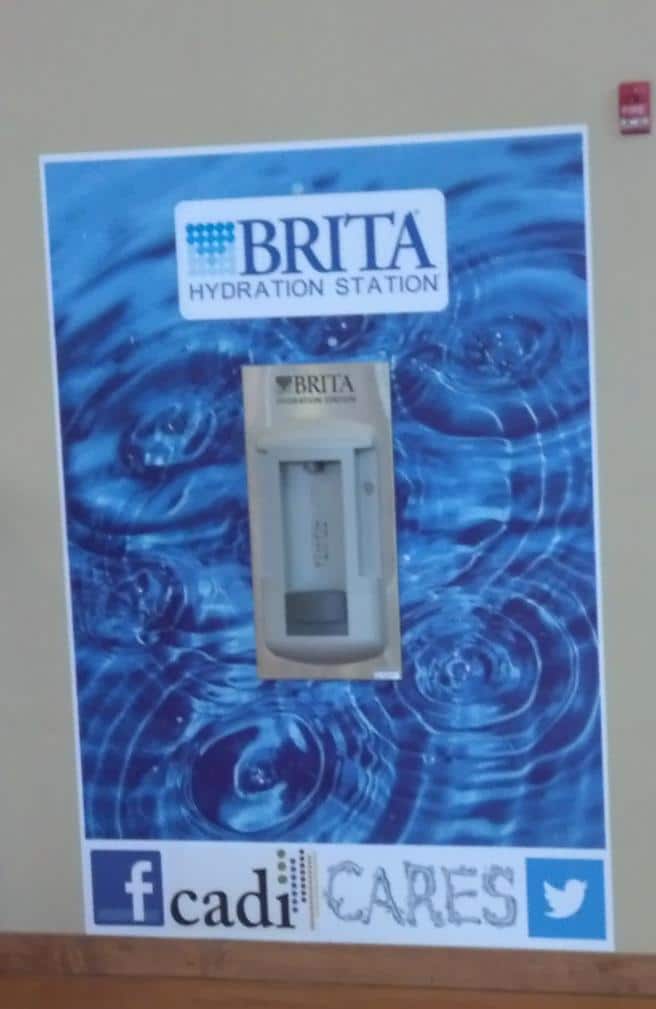 Renowned London dietician and nutritionist, Jo Travers commented “Children are less likely to recognize the early stages of thirst, which adults are more aware of, meaning they can forget that drinking water regularly is important. When children return to school, after being under their parent’s guidance during the holidays, they can quickly get out of the habit of drinking regularly if they aren’t being reminded.”
Renowned London dietician and nutritionist, Jo Travers commented “Children are less likely to recognize the early stages of thirst, which adults are more aware of, meaning they can forget that drinking water regularly is important. When children return to school, after being under their parent’s guidance during the holidays, they can quickly get out of the habit of drinking regularly if they aren’t being reminded.”
Parents notice when their child is dehydrated when returning from school, over half of the respondents said their children are irritable and 59% of parents said their child was tired.
Jo Travers adds “Children require higher quantities of water in relation to their body weight than adults. When hydrated, children have greater cognitive function, better visual attention, improved accuracy in motor skills such as handwriting, and more concentration which helps them to perform better. Therefore it is important that parents have access to the right information and support to help them keep their children hydrated throughout the school day.”
Read the full article here: Female First – Are your children dehydrated?
The Myth of Hydration in Winter MonthsMYTH: Cooler Temperatures Mean I Don’t Need To Drink As Much Water Because I’m Not Sweating As Much…
We don’t often associate cold weather with dehydration.
If you’re working or exercising outside on a cool fall day, or even a cold winter day, you’re just not as aware of losing fluids as you are when you’re sweating buckets in mid-August. First of all, humidity tends to be lower and as your sweat evaporates, you feel cooled off and fairly dry. Secondly, the colder it is, the more your body works to protect you from the cold. Nuun (a hydration drink) explains it this way: “blood (rushes) away from your extremities to your core to keep you toasty so there is more fluid than normal in your core. Your brain reads this core blood and can mistake it for water, and when it does your thirst doesn’t effectively grow at the same rate with which you’re losing water!
It’s just as important to maintain hydration in cooler, drier winter conditions as it is in steamy summer conditions, and it can be harder to recognize that you need water!
Tips for staying hydrated during winter:
1. Have a hydration plan and carry a reusable bottle wherever you go.
2. Pay attention to signs and symptoms of dehydration such as headaches, muscle cramping, or fatigue.
3. Drink warm water when the weather is cool to stay hydrated without dropping body temperature.
4. Sip on water every 15-20 minutes throughout the day and never wait until you are thirsty to drink as thirst means you are already dehydrated.
This fall and winter – stay hydrated; stay safe!
How to Avoid Heat Causing Illnesses 101!“Hydration plays an important role in worker safety and productivity. Companies, safety directors and employees all want to work safely, perform productively and return to work the next day. And everyone wants to avoid accidents and injury at all costs.”(The Sqwincher Corporation)
Have an action plan handy in the workplace to avoid any heat related issues! An action plan can prevent potential illnesses and harsh health conditions. Potential health issues that can occur form the heat are: skin rashes, heat illness, heat cramps, heat exhaustion, and heat stroke.
There are two factors that contribute to the increase in heat. The two factors contributing to heat increase are both environmental and personal factors.
Environmental factors from heat include:
- Air temperature, humidity and air movement
- Radiant temperature in the workplace
- Extreme climatic conditions
Personal factors developing from heat include:
- Clothing worn
- Level of working activity
- Level of fluid loss and replacement, affecting water and salt balance (stay hydrated!)
Keep temperatures in a range through the use of engineering controls such as:
- Air conditioning
- Air conditioning air circulating fans, provision of good ventilation
- Insulating or shielding sources of heat in the workplace
-
Insulating the roofs and walls of the workplace
-
reducing heat gain via windows by implementing reflective film or blinds
- Ducting hot exhausts outside the workplace
- Mechanizing some of the tasks
- Providing air-conditioned work vehicles.
Who is at risk? Everyone is at risk, in and outside of the workplace! Remember to stay hydrated and cool during the seasonal changes.
9 Hydration Facts You Should Know to Help You Live a Better Life
1. Over 80% of adults and children live in a constant state of dehydration.
2. Not having enough water in your system may promote build-up of kidney stones. Water is needed to flush out waste products in order to dissuade kidney stones from forming.
3. Hydration is directly correlated with a person’s ability to concentrate. The ability to concentrate is critical in achieving outstanding performance in work and school.
4. If you feel hungry, try sipping on water instead. Fact is, hunger may be mistaken for your body actually needing water.
5. Waiting until you are thirsty is not the best indicator to let you know that you are dehydrated. The thirst mechanism will only kick in once you are already at a mild state of dehydration. Checking the color of your urine is the best indicator to being in a healthy state of hydration.
6. 75% of your brain is made up of water.
7. Water is the only drink that your body requires, next to being a vital element in human survival. We can only live without water for a few days.
8. Beer is mostly made up of water – 95% water and 5% alcohol. Drinking beer will not help with hydration, which is why you may get a hangover from drinking too much of it. A hangover is a strong result of dehydration.
9. Soda is a diuretic, causing you to urinate excessively. When this happens, you must drink water to replace the fluid lost or you will remain in a state of dehydration.
